In the Beginning
Thousands of First Nations have lived in the Red River Valley for centuries. In the late 1700s, Cree people travelled along Lake Winnipeg to settle near Netley Creek. The Saulteaux, led by Chief Peguis from the Sault St. Marie region in the east settled along the Red River in 1790. This is where the Cree and Saulteaux peoples continued to live for decades, thriving as hunting and fishing communities.
This area also caught the attention of newly arrived Europeans in the early 1800s. The land was fertile, and close to the river which was vital for travel, trade, and agriculture. Selkirk Settlers, groups of Irish and Scottish immigrants began to populate the area in 1812. Chief Peguis is credited for helping these newcomers navigate the land, the hazards that came with winter, and the complex dynamics of the Fur Trade.
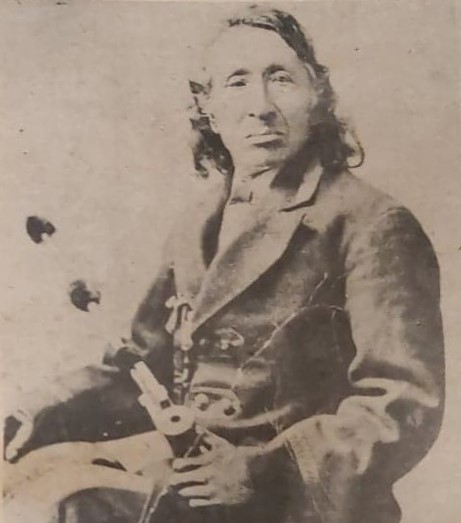
The Peguis-Selkirk Treaty
In 1817, the Peguis-Selkirk Treaty was signed between Lord Selkirk, Chief Peguis, and four other Chiefs, La Robe Noire, Premier, L’homme Noir, and Le Sonnant. The Treaty recognized that the territory from Lake Winnipeg to Sugar Point was Saulteaux and Cree territory. The Treaty also determined that a three-kilometer strip of riverfront land would be allocated for settler use. The Indigenous leaders signed the treaty with the understanding that they were entering into a land sharing agreement. The land would be ‘rented’ for settler use in exchange for generous, annual gifts. However, after Selkirk’s death in 1820, a contrasting and determining conclusion was realized; this contract assured the surrender of Indigenous land.
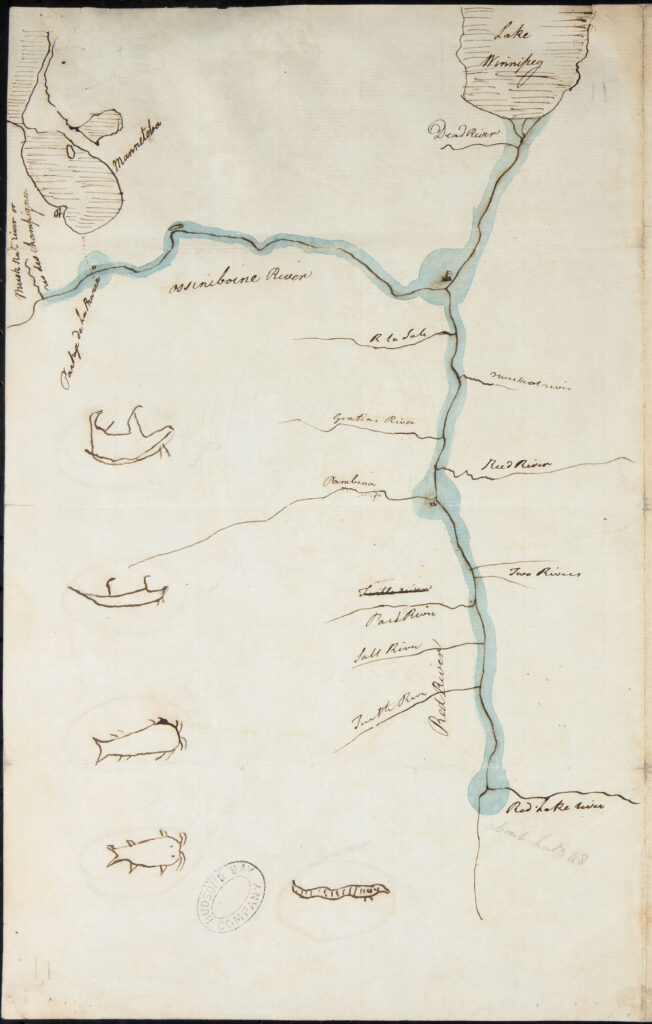
The Christian Influence
Several missionaries arrived in St. Peter’s area armed with the goal of educating and converting the Indigenous people to European ways and Christian ideologies. The arrival of Reverend William Cockran in 1825 furthered the agricultural settlement plans into motion. Under his purview, the parish grew, and structures were built, such as wooden houses, a school, blacksmith shop, and the St. Peter’s Church. The agricultural settlement was largely a success, however, the conversion of the people to Christianity was less so. Only a few members of the parish converted, such as Chief Peguis, while many maintained their own beliefs.
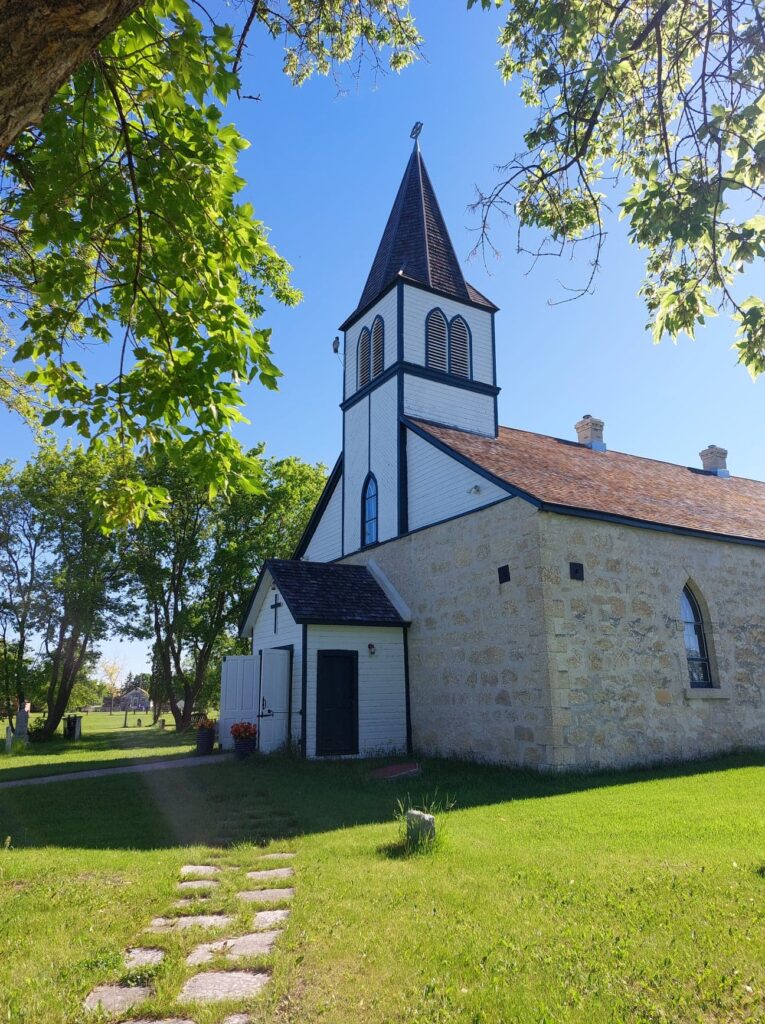
Treaty One
Following the Red River Resistance, the creation of Manitoba, and Canada’s purchase of the land concession that the HBC received from King Charles II in 1670, Canada sought a more formal treaty with the Cree and Saulteaux in the Red River region. Treaty 1 recognized the Saulteaux and Cree territory along the Red River as reserve land and promised to protect it from further settler development. However, this was short lived. The Town of Selkirk was a decade away from incorporating, and settler civilization was booming.
The new reserve under Treaty 1 stretched approximately from the south end of Eveline Street to Netley Lake. The first 15 lots belonging to the reserve would eventually become engulfed within the Town of Selkirk limits.
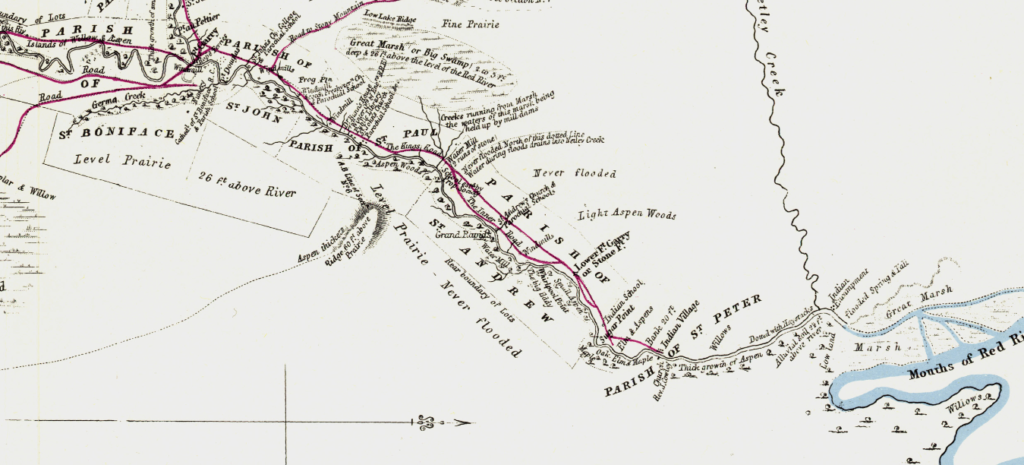
As part of the Treaty 1 agreement, the government promised to offer agricultural aid, such as farming equipment, livestock, and seeds. However, the government often sent wild and unusable cattle, wrong or broken equipment, and seeds too late in the season to be planted.
Success Turned Sour
Despite these setbacks, the people thrived. They were accustomed to agriculture, having grown food successfully for over 3000 years. The soil was fertile, being on the rivers’ edge, so the possibility of harvestable crops was extensive. The St. Peter’s Reserve easily became one of the wealthiest settlements in the area, with reports of the people being “enterprising, industrious, and anxious to farm.” – Sessional Papers, House of Commons vol. 12, no. 7, 1878, p. 54.
However, credit was not given where credit was due. Indian Affairs officials took responsibility for the agricultural achievements of the settlement and used it to propagandize the government’s wisdom and success in civilizing the ‘wild country.’
The Beginning of the End
The success of the St. Peter’s Reserve threatened settlers from all sides. The feeling began to circulate that reserves close to towns were “damaging to the morals of all.” – Manitoba Historical Society. Premium agricultural land was thought to be wasted unless in the hands of settlers, despite the overwhelming and obvious success of St. Peter’s Reserve. Leading Selkirk citizen, James Colcleugh, began a petition in 1883 to pressure the Canadian government to sell the St. Peter’s Reserve as it was a “drawback to our growth and prosperity.” – Selkirk: The First Hundred Years, Barry Potyondi, p.32.
The conflict began to rise about who should have the prized Red River land. The idea that the First Nation should forfeit their reserve became increasingly popular. In 1906, Hector Howell, the Chief Justice of the Manitoba Court of Appeal was tasked with a way to smooth over the land dispute. He recommended that 1000 more acres be added to the reserve, but then used the extra acres to support his argument that the reserve was too large and unruly for the St. Peter’s people to manage. He stated that it was in the best interest of the surrounding community and the Cree and Saulteaux leave their reserve. Members of the St. Peter’s Reserve wholly objected to this suggestion.
All Called to Vote
A meeting was called to discuss the possibility of surrendering the reserve, however, St. Peter’s Reserve members were only given one day’s notice to attend the meeting. Those that were able to attend the meeting gathered in a schoolhouse, which was too small to house all the attendees. Many people had to stand outside and listen through the windows and doors. The people were read the terms and conditions of the surrender agreement in English, a language little understood amongst residents at the time.
Following the meeting, the surrender was brought to a vote. Each person was asked to separate into two lines, those in favour of the vote to one side, and those against on the other side. When the vote appeared to not be in their favour, Indian Agent Reverend John Semmens gestured to the affirmative side and called out in Cree, “which of you want $90, go over there.” Superintendent General of Indian Affairs, Frank Pedley also promised $5000 would be distributed if a surrender was achieved.
The vote was concluded with 107 people for, and 98 people against, however voters were not moderated, so people without the right to vote could have voted. Furthermore, additions were made to the surrender document after the vote was cast. The surrender was confirmed in 1907 and each St. Peter’s member received a patent for land at St. Peters Reserve. This land was to be sold, and the St. Peter’s residents were to move to a new reserve on Lake Winnipeg.
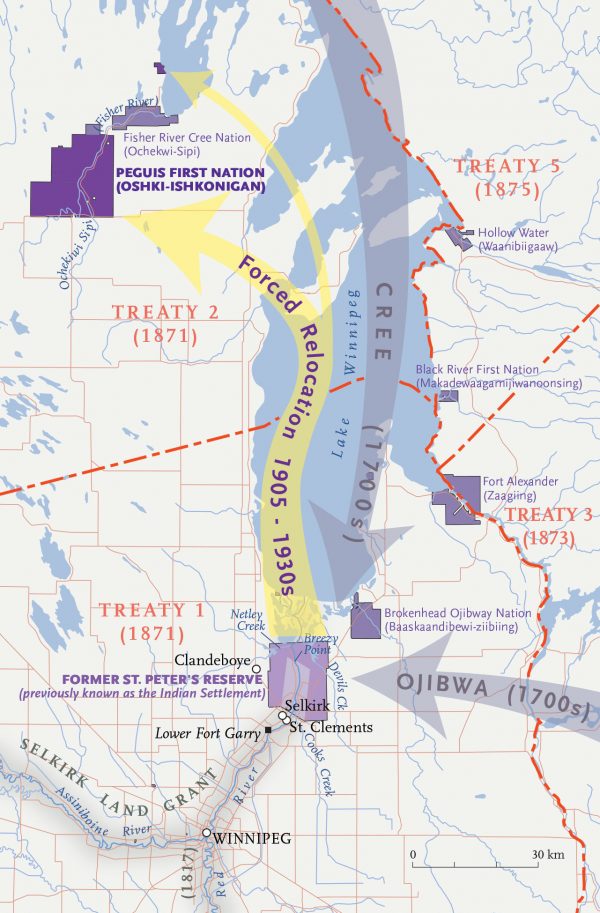
Many people moved to the new reserve, Peguis First Nation, but several families remained along the Red River. In an effort to remove any families still in possession of their land allotments, the St. Peter’s Reserve Act was passed in 1916. This act not only stated that the land was no longer reserve land, but also allowed for an extra payment per acre to be given to the remaining Indigenous landowners. Despite this, the land often sold for far less than its market value. Without reserve designation, the land could be mortgaged or seized for debt which created a loophole for government possession. Prospecting land buyers also had their own methods of coercing Indigenous owners into forfeiting their land, such as offering to pay fines for drunkenness in exchange for their land titles.
“Thus far everything moved smoothly forward; the end which the people of Selkirk desired — the transferring of the reserve land to white owners, ensuring the cultivation and development and the removal of the Indians from the vicinity.” – Winnipeg Free Press, February 4, 1914.
Legal Battles
Following the surrender, many members of the former St. Peter’s Reserve expressed their dissatisfaction and passed a petition. George H. Bradbury, a Selkirk MP, spurred by the petition questioned the validity of the surrender in the House of Commons in 1909. He stated that the sale of the land was a “barefaced swindle” and that “it would be a crime against everything that is decent and fair as well as against the town of Selkirk to legalize this disgraceful transaction.” The case was promised to be taken to court but Bradbury’s motion was rejected.
In 1911, the surrender was investigated and was declared invalid by the St. Peter’s Indian Reserve Commission, but the findings of the commission were ignored. Many people found themselves caught in a debate as to whether the 1907 vote was valid or not.
In 1916, the St. Peters Reserve Act passed, which confirmed the surrender and the validity of non-Indigenous land titles. This act was passed primarily to appease the new, settler landowners who had moved in after the St. Peter’s Reserve was dissolved. If the 1907 vote were to be declared invalid that would mean allowing former St. Peter’s Reserve residents to return, thus displacing hundreds of new residents. The government would be forced to compensate millions of dollars to the new residents. Because many of the St. Peter’s Reserve members had now moved away, it was easier for the government to move the remaining Indigenous people off the land.
In 1933, a group from the Peguis First Nation attempted to reclaim the St. Peter’s Reserve land, but they weren’t heard.
At last, by 2008, the Canadian government acknowledged that the 1907 vote was indeed invalid. The government offered a 126-million-dollar settlement to the Peguis First Nation in compensation for the illegal uprooting of the people of the former St. Peters Reserve.
While the Peguis First Nation accepted the settlement, the lasting effects of relocation, family separation, trial, and trauma are still very present today. Canada’s history is short, but it is strongly felt, with the dissolution of St. Peter’s Reserve having happened only a few generations ago. It is important to remember the foundation that Canada is built on and the reverberating effects the birth of a new country has on the long-time residents of the land.
St. Peter's Reserve Collection
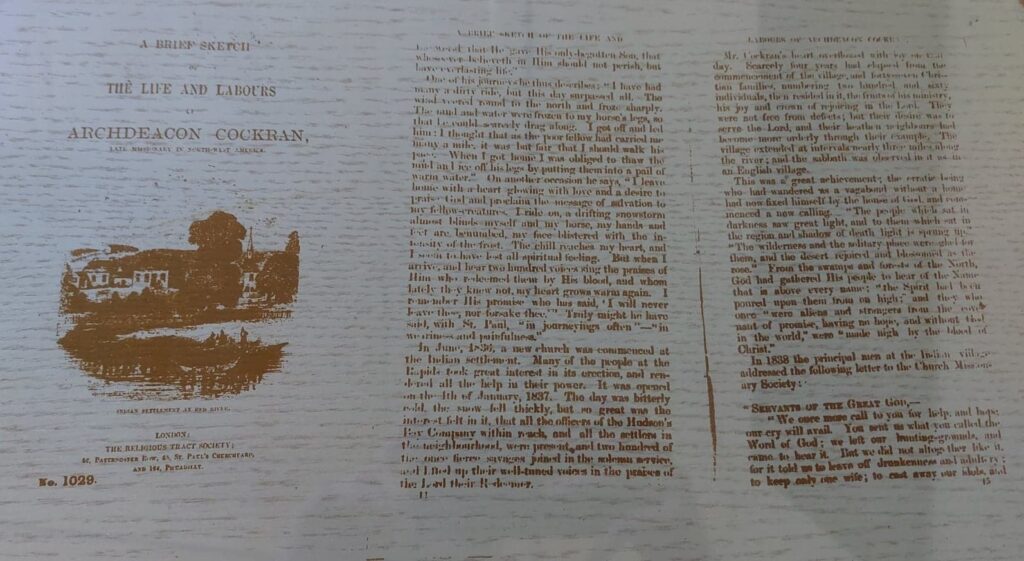
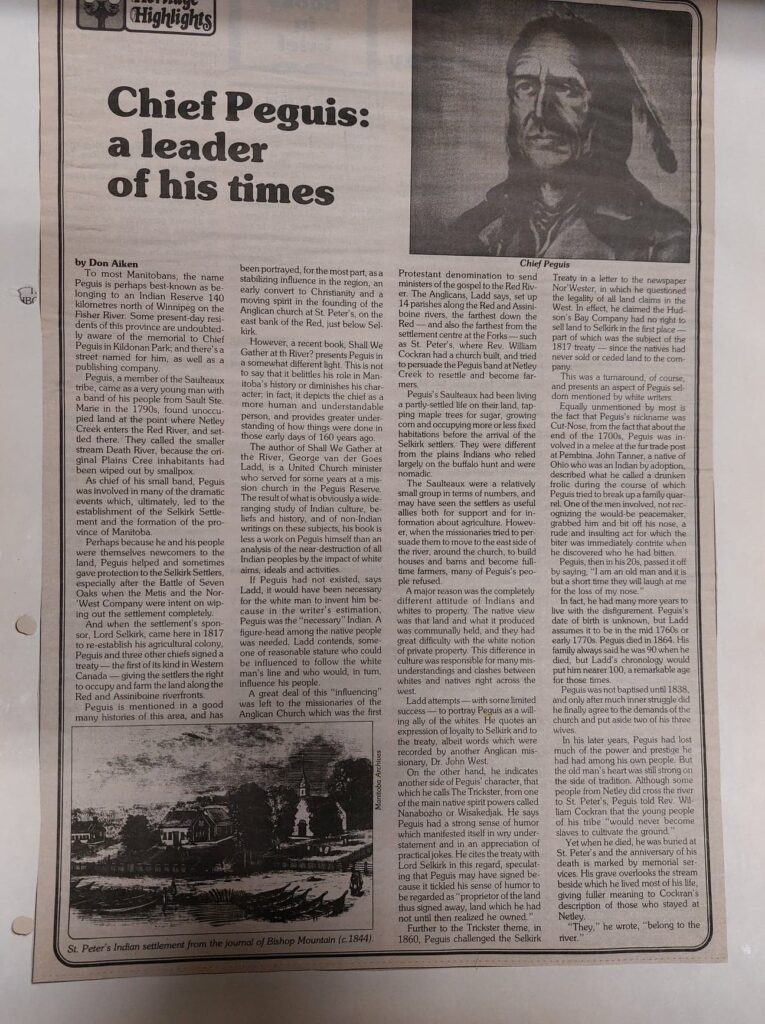

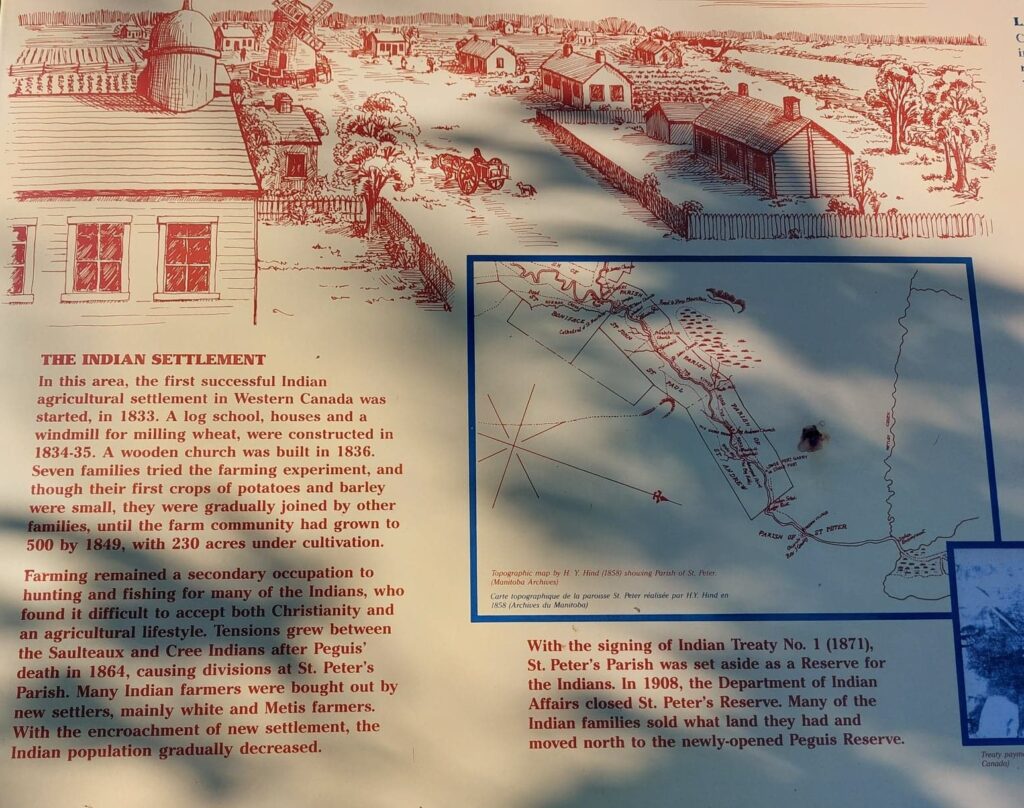
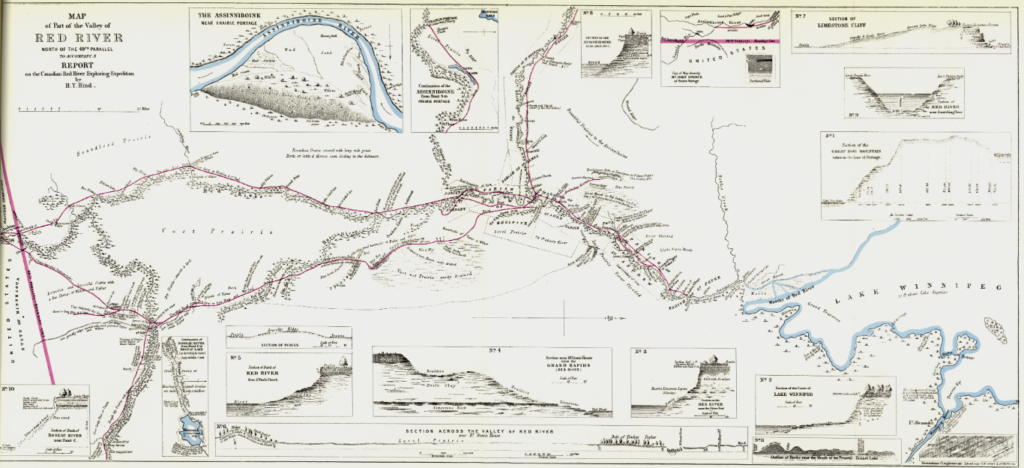
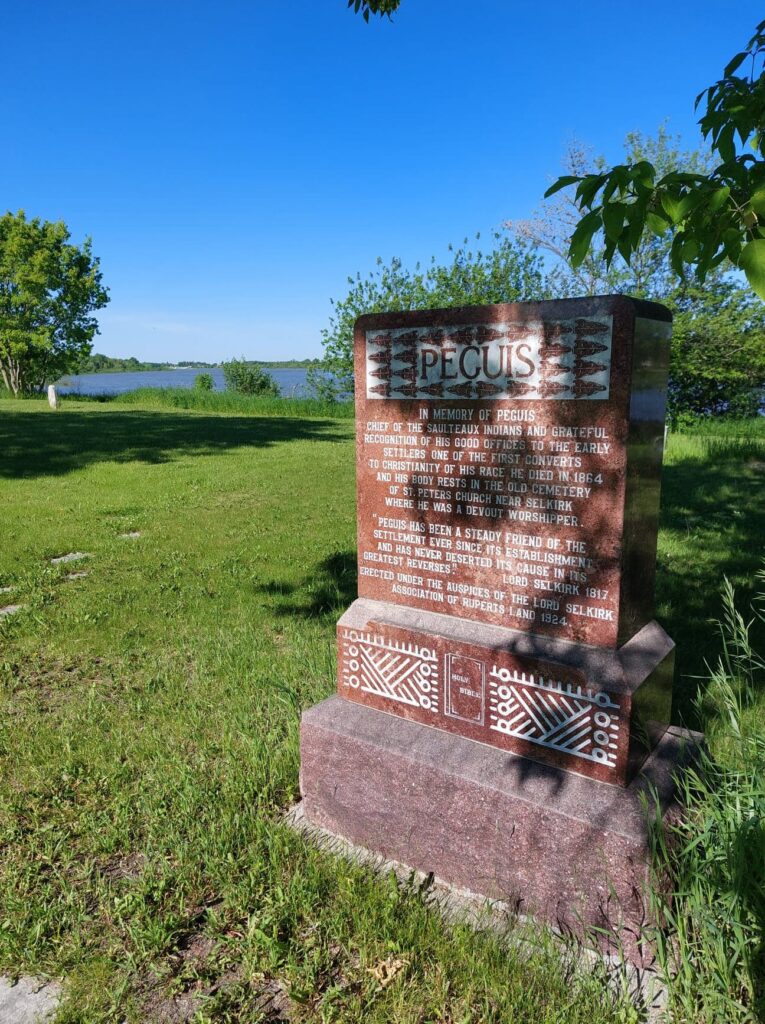




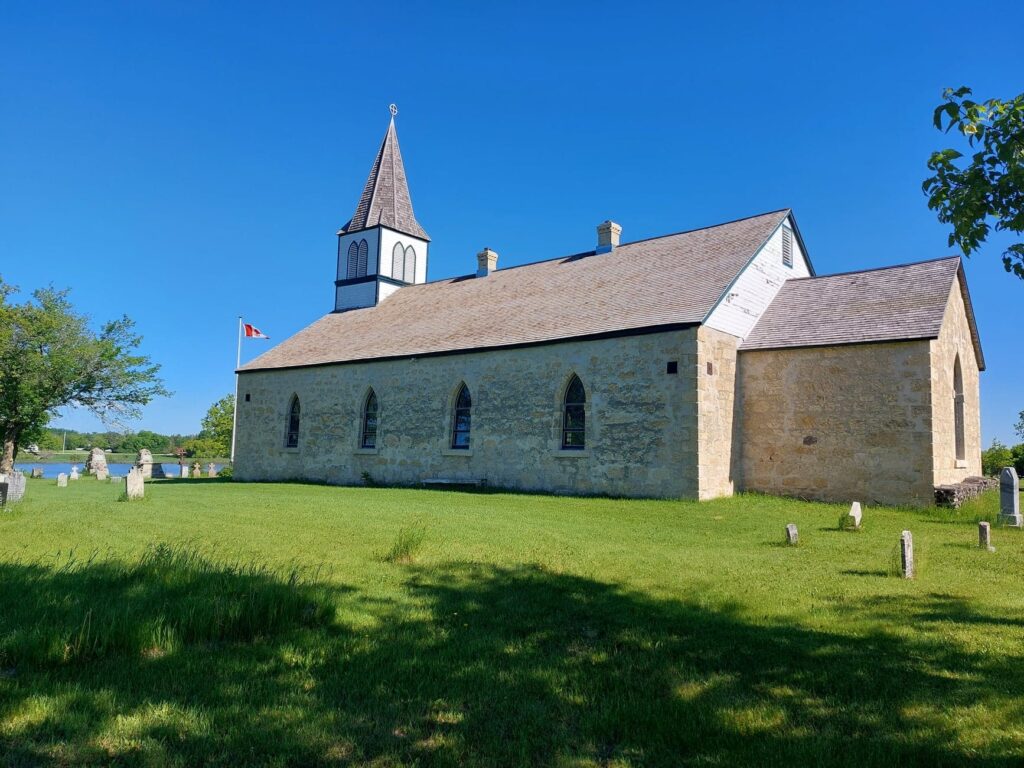
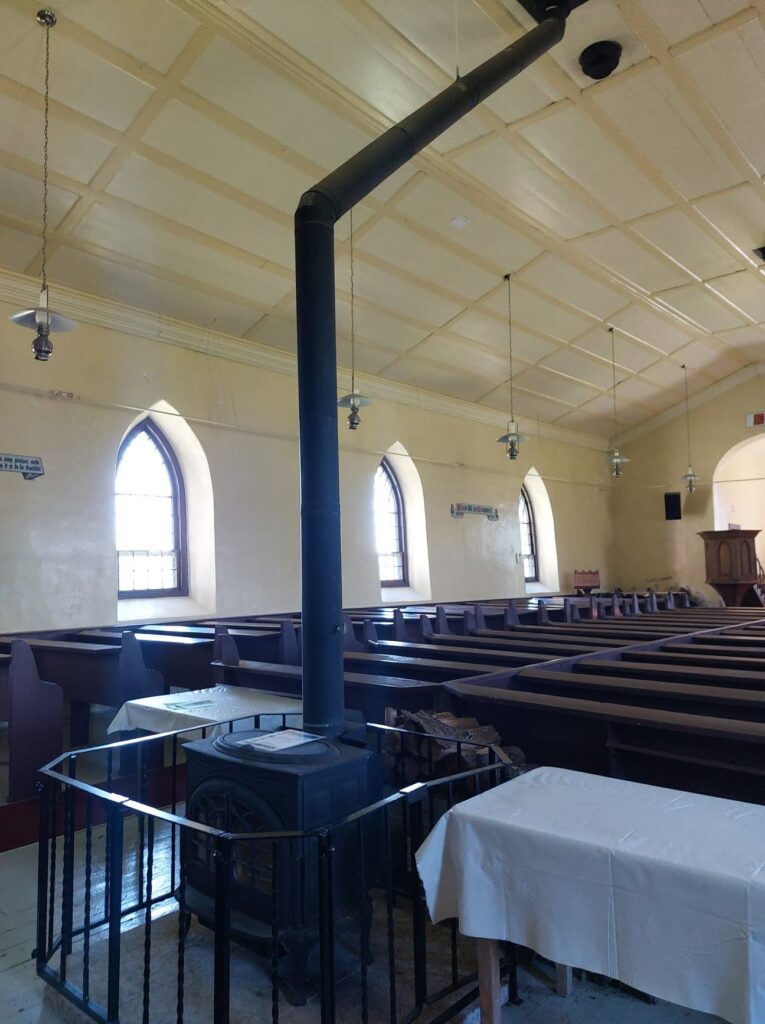
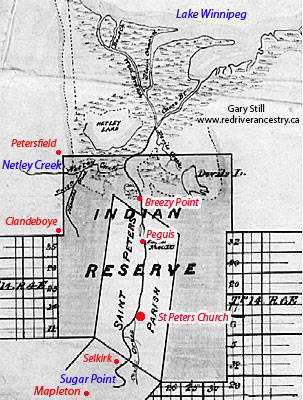
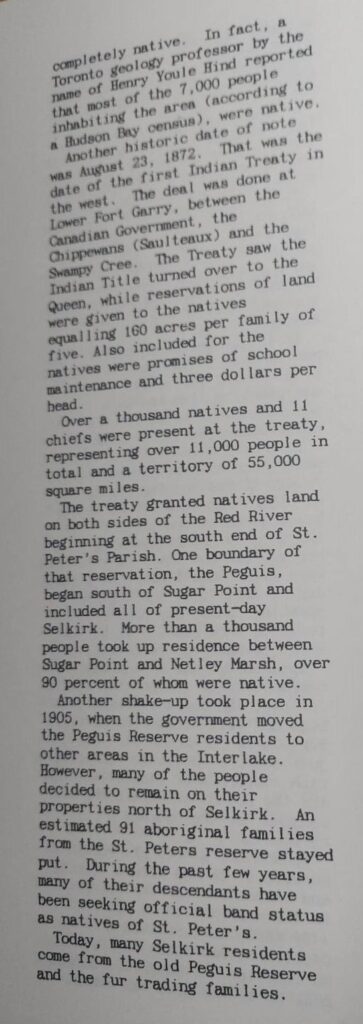
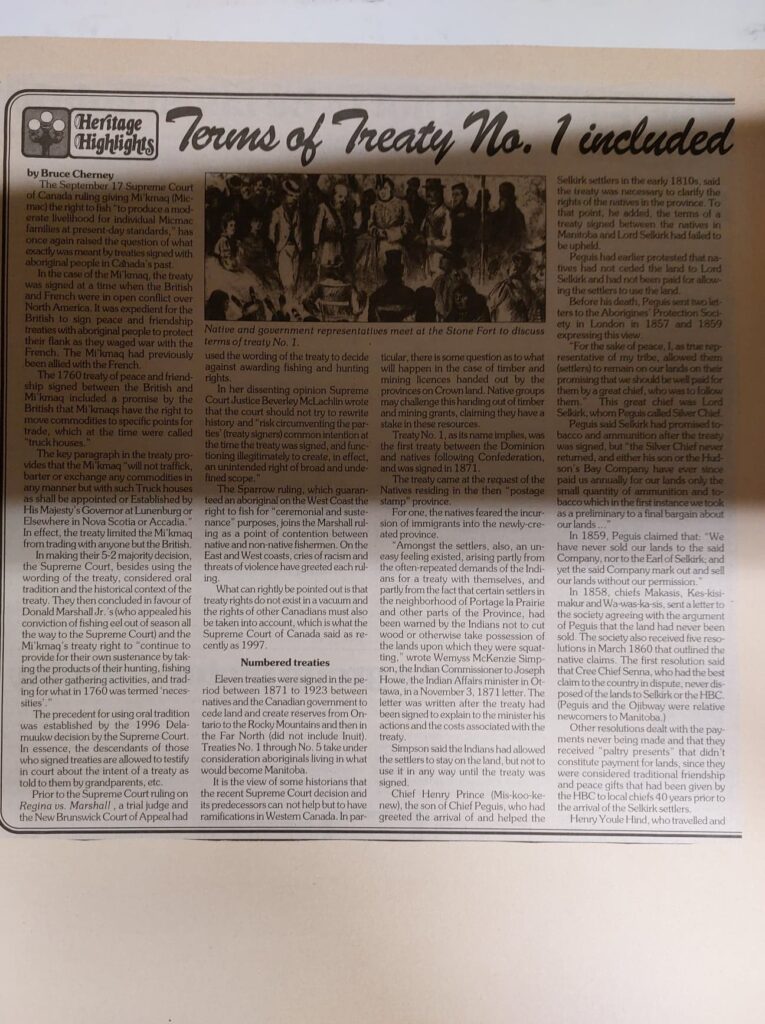
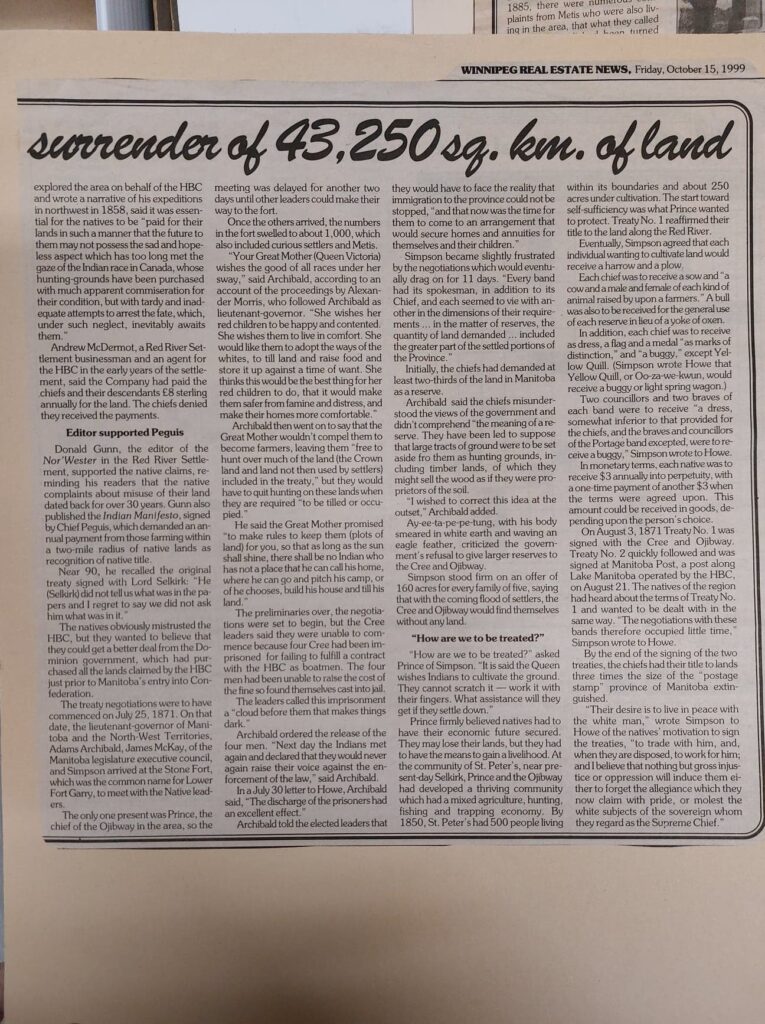
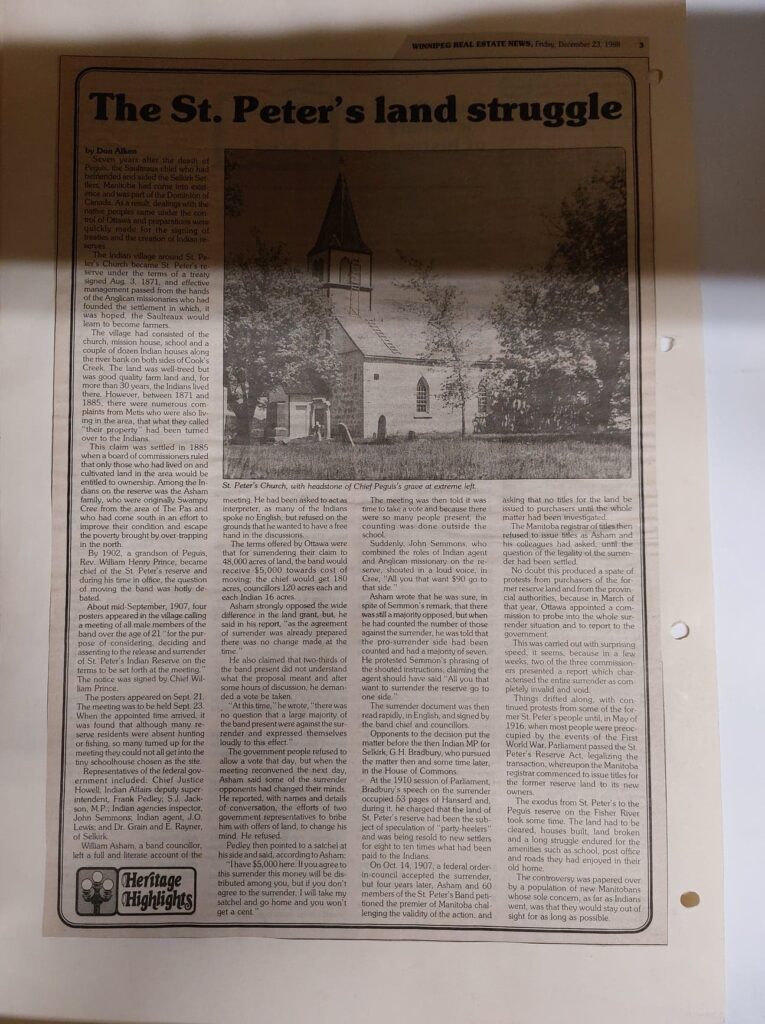
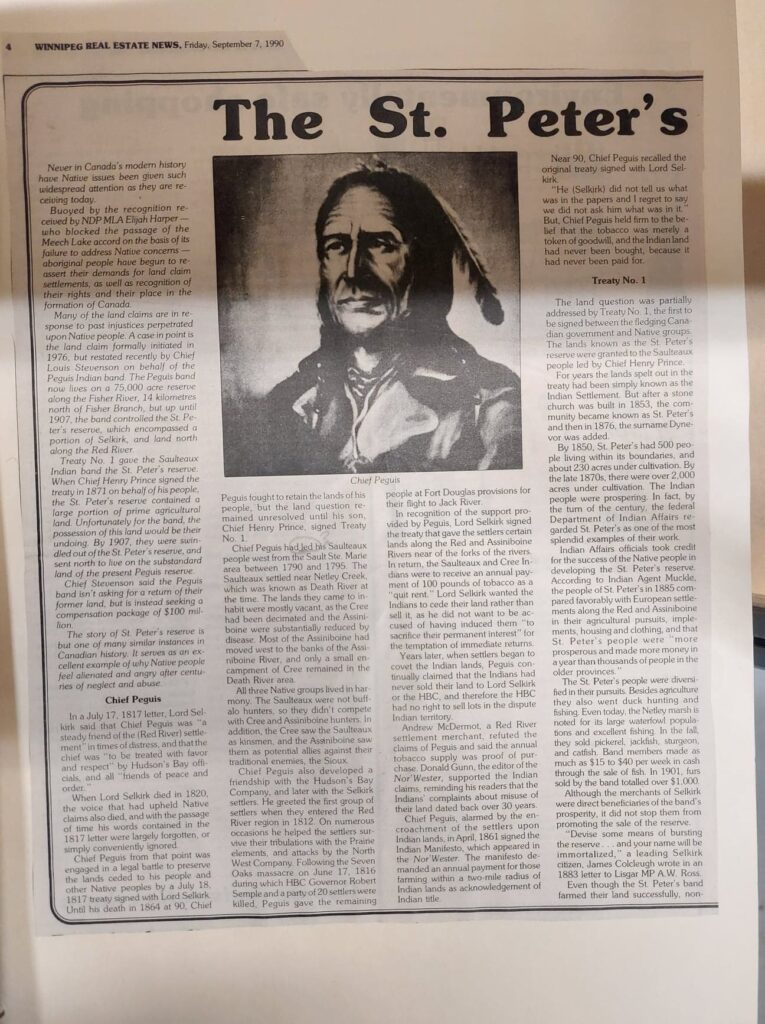
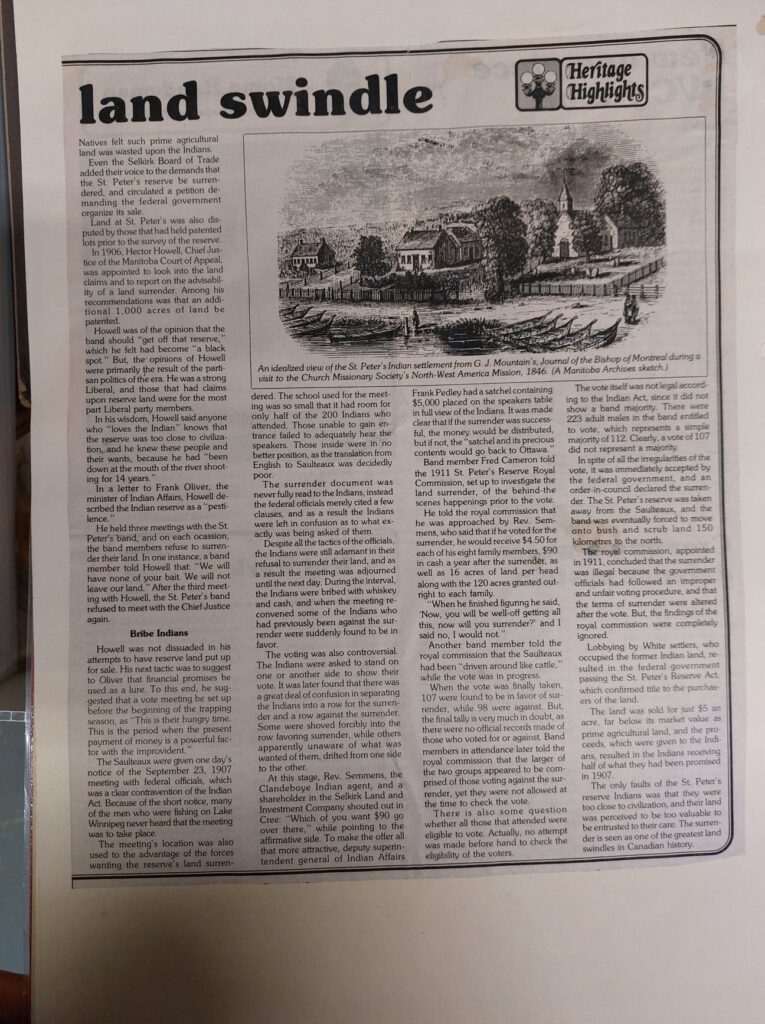
The Selkirk Museum makes every attempt to ensure the accuracy of the content that is shared. The Selkirk Museum acknowledges the lived experiences of others and the responsibility we have to care for and tell their stories.
The Selkirk Museum has ongoing discussions with Indigenous Elders, leaders, and communities, as well as with employees, contractors, volunteers, and community organizations with the goal of strengthening existing relationships, creating new partnerships, and informing inclusive Museum content. If you can contribute to this goal, please contact [email protected].
Sources
Bird, Cynthia. “Forced Population Movements.” Indigenous Peoples Atlas of Canada, June 14, 2018. https://indigenouspeoplesatlasofcanada.ca/article/forced-population-movements/.
Canada, House of Commons, Sessional Papers, vol. 12, no. 7, 1878, p. 54.
Carter, Sarah. “Manitoba History: Site Review: St. Peter’s and the Interpretation of the Agriculture of Manitoba’s Aboriginal People.” Manitoba History: St. Peter’s and the Interpretation of the Agriculture of Manitoba’s Aboriginal People, 1989. http://www.mhs.mb.ca/docs/mb_history/18/manitobaaboriginalagriculture.shtml.
Cherney, Bruce. “St. Peter’s Surrender – Howell Claimed New Reserve Was Fully Satisfactory to Band Members.” Winnipeg Regional Real Estate News, November 3, 2011. https://www.winnipegregionalrealestatenews.com/publications/real-estate-news/1398.
Dempsey, Hugh A. “Peguis.” Dictionary of Canadian Biography, 1976. http://www.biographi.ca/en/bio/peguis_9E.html.
Eeles, Katrina. Bill Shead Oral History Interview. Personal, April 25, 2023.
Gaudry, Adam. “The Selkirk Treaty, 1817.” Library and Archives Canada Blog, August 2, 2017. https://thediscoverblog.com/2017/07/20/guest-curator-adam-gaudry/.
Hasselstrom, Nathan. “An Exploration of the Selkirk Treaty,” 2019. file:///C:/Users/KEeles/Downloads/Hasselstrom_Nathan_2019_thesis.pdf.
Heckman, Annie. “St. Peter’s.” Kiinawin Kawindomowin – Story Nations, October 26, 2020. https://storynations.utoronto.ca/index.php/st-peters/.
Potyondi, Barry. Selkirk: The First Hundred Years. Winnipeg, Manitoba: Josten’s/National School Services, 1981.
Scene and Heard – Niigaanwewidam James Sinclair. YouTube. CBCManitobaScene, 2012. https://www.youtube.com/watch?v=2wzchBBhc_M&t=208s.
Sutherland, Donna. “First Nations and Métis People of Red River Settlement (Pre and Post Confederation).” Red River North Heritage, January 31, 2022. https://redrivernorthheritage.com/first-nations-and-metis-people-of-red-river-settlement/.
“St. Peters Indian Reserve Surrender Is to Be Annuled.” Winnipeg Free Press, February 4, 1914, 41 Issue. https://newspaperarchive.com/.
“St. Peter’s Reserve: Surrender, Land Dispute and Hay Marsh.” Red River North Heritage, November 26, 2020. https://redrivernorthheritage.com/st-peters-reserve-surrender-land-dispute-hay-marsh/.
“St. Peter’s Settlement/Reserve.” Red River North Heritage, November 26, 2020. https://redrivernorthheritage.com/st-peters-settlementreserve/.
Niigaan James Sinclair | The History of the St. Peters Band Removal (January 2018). YouTube. Canadian Mennonite University, 2018. https://www.youtube.com/watch?v=cnubF8tLJ4s&t=2s.
“Treaty Land Entitlement Trust.” Peguis First Nation, February 12, 2020. https://peguisfirstnation.ca/about/treaty-land-entitlement-trust/.

